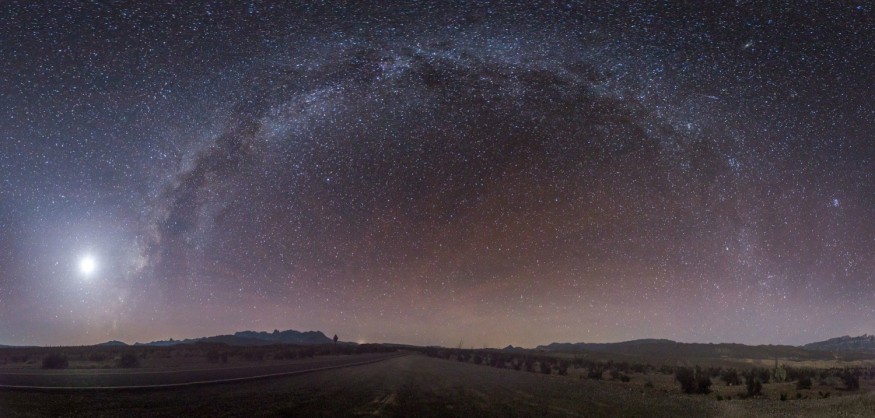
Australian astronomers have captured a magnificent new view of the center of the Milky Way galaxy. The image shows what our universe would look like if human eyes could see radio waves.
Astrophysicist Dr. Natasha Hurley-Walker, from the Curtin University node of the International Centre for Radio Astronomy Research (ICRAR), formed the images through the Pawsey Supercomputing Centre in Perth.
Hurley-Walker said the new view captures low-frequency radio emission from the galaxy - looking both in fine detail and more substantial structures - in yellow and gold, with flecks of blue and green.
"Our [photos] are [directly watching] at the core of the Milky Way, towards an area which astronomers call the galactic center," Hurley-Walker said.
The researchers acquired their information from the GaLactic and Extragalactic All-sky MWA Survey (GLEAM). The survey contains a resolution of two arc minutes - about the same resolution as the human eye - and outlines the sky through radio waves with wavelengths between 72 and 231 MegaHertZ (MHz).
"It's the [capability] of this wide [wavelength] range, which makes it [feasible] for us to [untangle complex] overlapping objects as we look toward the complexity of the galactic center," Hurley-Walker said. She added different objects to have different "radio colors" for the public to use them to work out what physics is at play.
Dr. Hurley-Walker and her colleagues discovered the remnants of 27 massive stars that exploded in supernovae at the end of their lives with the help of the images. The stars measured eight or more times more massive than our sun before their drastic end thousands of years ago.
Younger and closer traces of the supernova, or those in very dense conditions, are effortless to locate - and 295 are already identified. The MWA, unlike other instruments, could detect those older, further away, or in empty environments.
One of the newly discovered supernova remnants, according to Dr. Hurley-Walker, lies in such an empty region of space, far out of the plane of our galaxy.
"[The discovery are] the remains of a star that died nearly 9,000 years ago - meaning the blast could have been seen by Indigenous people across Australia that time," she explained.
Dr. Hurley-Walker said two of the discovered supernova remnants are "quite unusual orphans" seen in a region of the sky where there are no massive stars seen. Furthermore, future searches beyond other areas might be more successful than astronomers expected.
Other supernova remnants found in the research are ancient, Dr. Hurley-Walker said. She finds the discovery "exciting" because it's challenging to find supernova remnants in this phase of life. She added the recent development allowed the researchers to look further back in time in the Milky Way.
The MWA telescope is a forerunner to the world's biggest radio telescope, the Square Kilometre Array (SKA), which is scheduled to be made in Australia and South Africa starting 2021.
Dr. Hurley-Walker said the MWA is perfect for detecting these objects but is limited in its sensitivity and resolution. She added, "SKA's low-frequency, which will be built at the same site as the MWA, will be thousands of times more sensitive and have a much better resolution to detect thousands of supernova remnants that formed in the last 100,000 years, even on the other side of the Milky Way."
© 2025 NatureWorldNews.com All rights reserved. Do not reproduce without permission.





